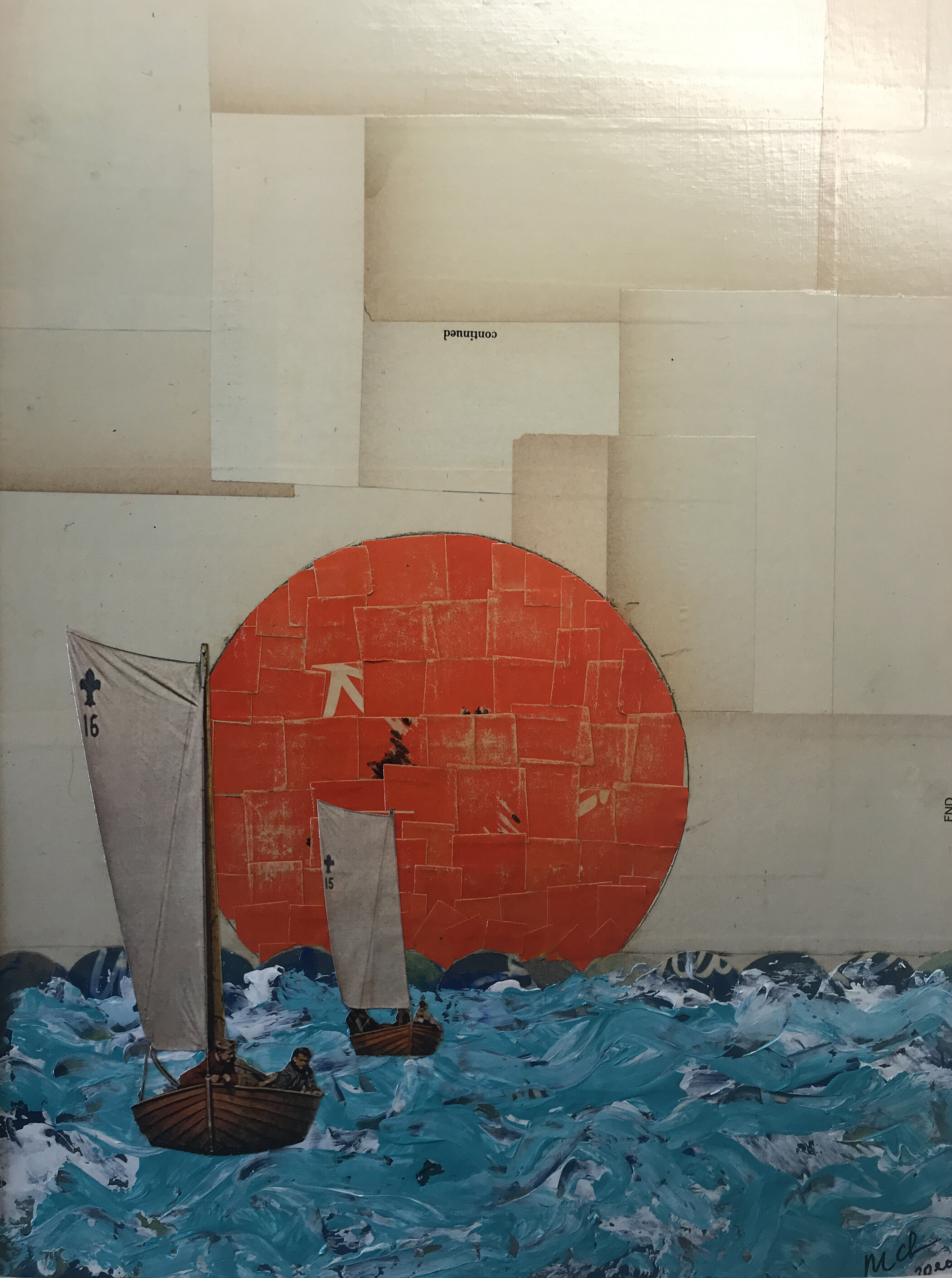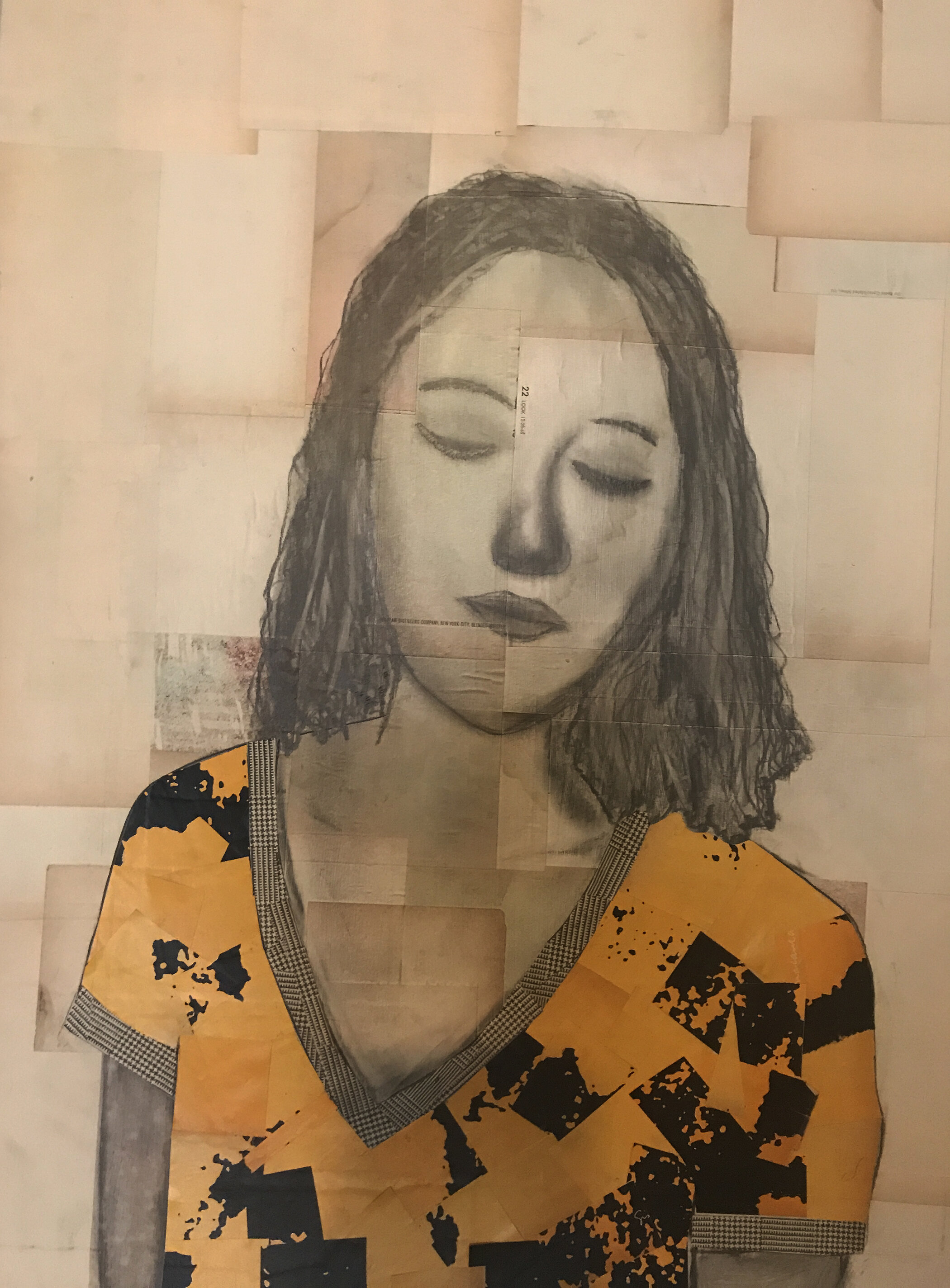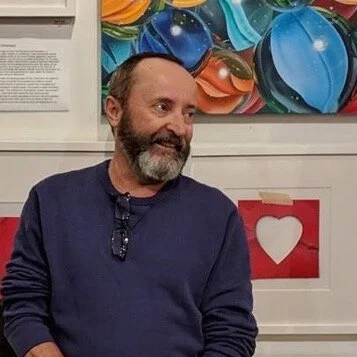Interview with artist Meikel S. Church
Meikel S. Church is a collage/mixed-media artist based in North Little Rock, Arkansas. He likes to challenge current-day perceptions with images from the past. His work draws you in and makes you think - about your own reality and how it is shaped by society.




We Lose Each Other, collage/mixed-media, 11” x 14”
AAS: Tell me about yourself. Were you born and raised in Arkansas?
MSC: I was born and raised in Conway, Arkansas. I recently moved to N Little Rock and love living in the Park Hill area. My partner Vincent and I are in the process of purchasing a home together and we are very excited.
AAS: Were you interested in art growing up (if so, what kind of art) or did it develop later?
MSC: I have always been interested in photography. I love looking at images of documentary photographers. Some of my favorites are Dorthea Lange, Diane Arbus, Henri Cartier-Bresson, Walker Evans, and Vivian Maier.
AAS: Oh, I can definitely see your inspiration from Dorthea Lange and Walker Evans and their depression-era iconic photographs. You are telling the story of the person in your image but often the face is obscured or even hidden.
MSC: I tend to obscure faces to remove the identity of the subject and therefore allow the viewer to place themselves, or someone they know into the piece. I don't like to try to explain what a piece means to me, or especially what I was thinking/feeling when I made it. I love it when someone connects to a piece of artwork that I've made. It’s the greatest reward for me.
AAS: You seem to be doing mostly collage work. How/why did you get starting doing collages? Did it come from an interest in vintage images?
MSC: I started doing collage in 2013. I immediately became addicted to the absurdity of taking found images and rethinking context. I have recently started using pencil, charcoal, conté crayons, and some paints in my work.
“I love it when someone connects to a piece of artwork that I've made. It’s the greatest reward for me.”
AAS: I have to ask: where do you find your vintage magazines? How fun it must be just to go through them?
MSC: I go to vintage stores, and antique shops all over looking for magazines. I have also been very fortunate to have friends who have donated books, and magazines for me to use.
AAS: Your bio on your website mentions that your childhood experiences have influenced your art. Is your creative process in a way 'therapeutic'? Tell me about your process. Does a particular image speak to you then you begin to find others that fit into the image’s story? Or, do you first have an idea for a theme and then look for images to express it?
MSC: I have always described my work as an autobiographical journey through my life. I am definitely drawn to some images and will work around those images to create my collage. As I’ve gained experience I have been able to create scenes from my imagination. My experiences of growing up in Arkansas greatly influence my art. The good, bad, and ugly of growing up gay in the south is always present in my work.
AAS: What I particularly like about your work is that it tells a culturally current story using ‘old’ images – a change of context.
MSC: As I go through old magazines I find myself reading articles from the 1940’s that are still relevant today. It reminds me of how alike we all are. We think we have changed so drastically from the preceding generation, but we really haven’t changed that much. Our vocabulary has changed and hopefully we’ve become more understanding of our differences and less afraid of things that are different.
“My experiences of growing up in Arkansas greatly influence my art. The good, bad, and ugly of growing up gay in the south is always present in my work.”
AAS: Tell me more about the process of collage. To me, unlike with paint, collage work is difficult to ‘cover up’ – I don’t want to say a mistake – how about a change in direction in a piece. Is that correct?
MSC: Since I don’t paint it’s hard for me to compare the two processes. I will say that collage allows me to make mistakes and usually they become part of the finished piece. I used to attempt perfection but now I just want to create my work. I am humbled and honored that people respond to it so positively, but my only goal is to be relevant.
AAS: You use social media quite a bit to sell your work. Other artists are doing that too. How has it been finding galleries or art venues around Little Rock/North Little Rock and the rest of the state to exhibit your work? Do you think online is becoming the new normal – especially with more potential customers in COVID-19 self-isolation?
MSC: I do use social media a lot. I have also been very fortunate to have exhibited my collage work all over the US, in Greece (2015 Collage Festival), and from Rogers in Northern Arkansas, to Monticello in the southern part of the state. I exhibit at Stephano’s Art Gallery in Little Rock, and in The Art Collective Gallery in Rogers, and as of this month, in Bentonville. I have been invited to exhibit at the Arts Center of the Ozarks in Springdale next year. All of the exhibitions i have been part of mean a great deal to me but the 2nd Annual Collagistas Festival in Thessaloniki, Greece in 2015 meant so much to me early on. I was one of only 51 collage artists worldwide invited to contribute and it was such a boost of confidence to me.
Lowell’s Memory, collage/mixed-media, 18” x 24”
AAS: The art scene around the state and especially NW Arkansas seems to be taking off. Young artists might like to know someone gets chosen to be represented by a gallery or to exhibit in a show. What has that experience been like for you?
MSC: I haven't had much experience with galleries, but when I was invited to be a part of a new gallery in NW Arkansas last year I was honored and humbled beyond belief. The exposure I have gained in NWA has been enormous and I have sold one piece to a collector from that gallery. That blew me away. I have been asked not to name the collector out of respect for her, but I am so honored that a collector of her stature would select a piece of my work. I was walking on clouds for a month when I found out. The collectors of my work here in central Arkansas mean a great deal to me, as well. I feel so fortunate that people who appreciate art, enjoy looking at and sometimes purchase something I've made. More than the money I earn, I value the pride I feel by these gestures. They are so encouraging to me.
AAS: Is there any type of organized mentoring program for young artists in the state? What advise can you give young artists trying to break into the art scene?
MSC: I am not aware of any organized mentoring programs in Arkansas. My advice would be to make stuff. I don’t mean to sound aloof, or dismissive but the biggest asset to any artist is to make art. I make art all the time, and when I’m not making it I’m thinking about making it.


